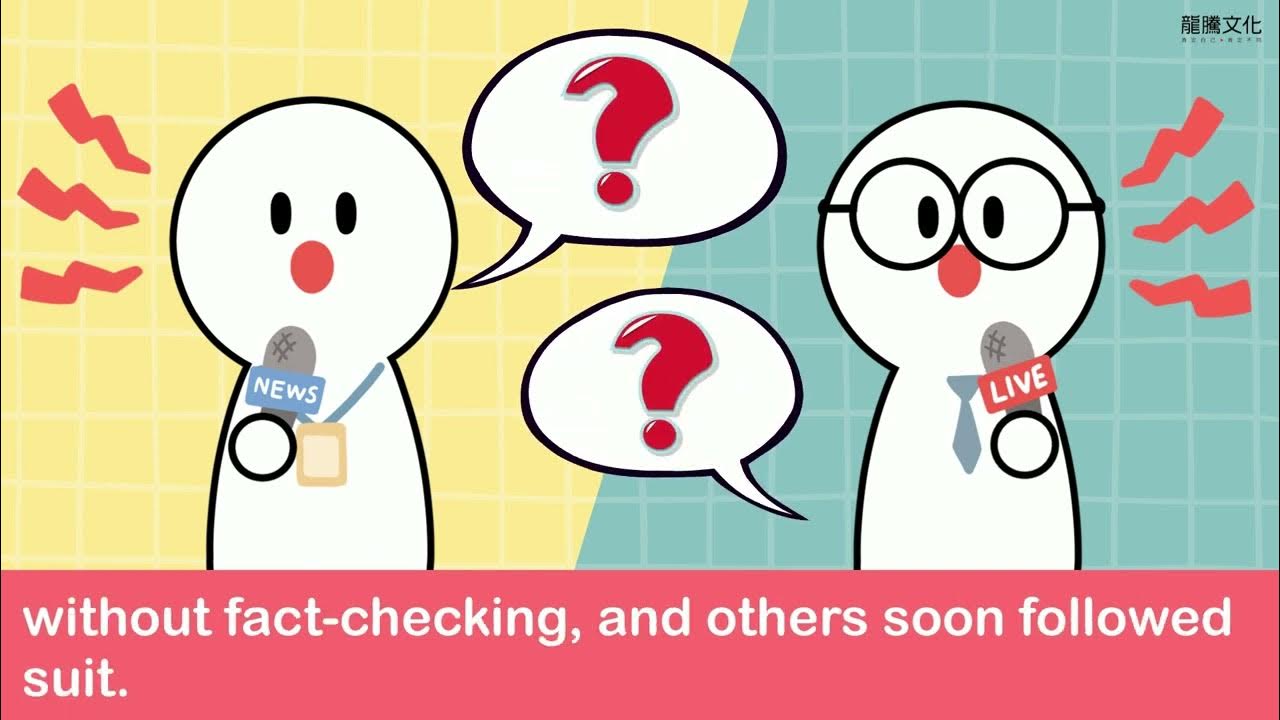Real News vs. Fake News
Summary
TLDRThe script addresses the issue of 'fake news,' which can be both deliberately misleading information and a term misused to discredit credible journalism. It highlights the importance of discerning news credibility in a media-rich environment, where real news has limitations such as narrative bias and sensationalism. The script emphasizes the role of reputable news organizations in verifying facts and correcting errors. It contrasts this with 'fake news,' which is misinformation that can be harmful to society. The script invites viewers to learn critical habits to identify misinformation in the next video.
Takeaways
- 🗞️ 'Fake news' can refer to both false information intended to mislead and a term used to discredit credible journalism.
- 👎 Using 'fake news' as an insult allows people to dismiss accurate information based on personal bias.
- ⚠️ The media landscape is dangerous when it confuses the public about the veracity of information.
- 📚 Understanding the limitations of news is crucial for evaluating its credibility.
- 🎨 News stories are narratives that may emphasize certain facts and can be influenced by the reporter's background.
- 🔍 News is a snapshot, subject to change and updates as new information emerges.
- 🎭 Sensationalism in news can overshadow context and data for the sake of audience attraction.
- 💬 Distinguishing between factual reporting and opinion pieces is essential for discerning news content.
- 🛡️ Reputable news organizations verify sources and correct mistakes to maintain accuracy.
- 📢 'Fake news' is misinformation, often omitting key facts or presenting a one-sided story.
- 🤔 Misinformation undermines democracy by affecting public policy, healthcare, and economic decisions.
- 🧐 Adopting critical habits in news consumption helps identify misinformation, including 'fake news'.
Q & A
What is the term 'fake news' often used to refer to?
-The term 'fake news' often refers to false or highly distorted information intended to manipulate and mislead, or as an attack on credible journalism to confuse people about the truth.
How can the term 'fake news' be misused to dismiss accurate information?
-The term 'fake news' can be misused as an insult to dismiss accurate information simply because individuals don't like it or because it conflicts with their political views.
What are some limitations of real news that affect its credibility?
-Limitations of real news include the narrative form that emphasizes some facts over others, potential influence from the reporter's background, the snapshot nature of news stories, sensationalization for audience attraction, and the mixing of content types that can blur the lines between news and opinion.
How do reputable news organizations ensure the accuracy of their stories?
-Reputable news organizations ensure accuracy through well-trained editors and reporters who verify sources, avoid speculation, and use professional fact-checkers to conduct research and correct any mistakes made.
What is the difference between real news and 'fake news'?
-Real news aims to provide accurate and verified information, while 'fake news' is a form of misinformation that can be completely untrue or heavily biased, often omitting key facts or presenting only one side of a story.
Why is sensationalism in news reporting a concern?
-Sensationalism is a concern because it can play up dramatic conflicts and focus on big personalities over contextual details or data, potentially distorting the truth and misleading the audience.
How can news websites and television programming mislead viewers about the objectivity of content?
-News websites and television programming can mislead viewers by mixing factual reporting with editorials, opinion pieces, and 'sponsored content,' making it difficult to distinguish between news and less objective material.
What role do fact-checkers play in maintaining the credibility of news?
-Fact-checkers play a crucial role in maintaining credibility by conducting research to ensure reporters get the facts right and by verifying the accuracy of news stories before they are published.
How can 'fake news' include the use of altered images or videos?
-'Fake news' can include the use of digitally altered or out-of-context images and videos to present a false narrative or to manipulate the audience's perception of events.
Why is misinformation, including 'fake news,' harmful to democratic society?
-Misinformation is harmful to democratic society because it can erode trust in accurate information, which is essential for making informed choices about public policy, healthcare, the economy, and other critical issues.
What are some critical habits that can help individuals identify misinformation, including 'fake news'?
-Critical habits include verifying sources, cross-checking information with multiple reputable sources, being aware of potential biases, understanding the context in which information is presented, and recognizing the difference between news, opinion, and sponsored content.
Outlines

This section is available to paid users only. Please upgrade to access this part.
Upgrade NowMindmap

This section is available to paid users only. Please upgrade to access this part.
Upgrade NowKeywords

This section is available to paid users only. Please upgrade to access this part.
Upgrade NowHighlights

This section is available to paid users only. Please upgrade to access this part.
Upgrade NowTranscripts

This section is available to paid users only. Please upgrade to access this part.
Upgrade NowBrowse More Related Video
5.0 / 5 (0 votes)





